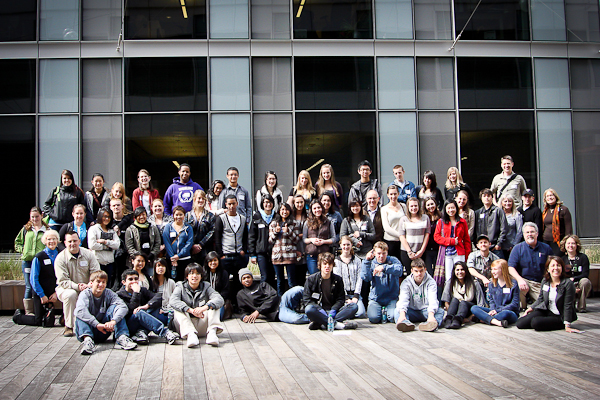
On April 9, 2011 the Youth Ethics Summit brought together students from across the Puget Sound region to learn about topics related to ethics, medicine, and biomedical research that are of special relevance to young people.
Presented by NWABR and UW’s Institute for Stem Cell and Regenerative Medicine (ISCRM), this year’s summit focused on stem cells and featured tours, panels, and breakout discussions. The Summit provided an opportunity for students from different schools to meet and to participate in discussions and presentations about ethics in science issues.
Students Say
Students who experienced the Summit said:
- I learned just how much control we have/might have soon. Knowing where to draw the line isn’t easy, and it’s something we all need to discuss and understand in order to make wise choices as individuals and as a society.
- We were able to express our own ideas and see what other people thought about them … the discussions we had in our breakout groups were very thought-provoking … listening to different view points on things helped me learn a lot more about them.
- The tours gave me insight on what real life stem cell research would be like and how it would be to work in a lab in the future.
- It was absolutely amazing going into three different labs focusing on the application of stem cells, the stem cells themselves, and the use of robots in research. The groups were small, we had the opportunity to look at both embryonic and induced pluripotent stem cells through microscopes, and the researchers were all extremely informative.
- In the laboratories we toured, I saw myself in the scientist gown, handling the different machines.
- It was a wonderful learning experience that I would recommend anyone who is interested in bioethics … I loved the chance to meet similar-minded teens in the Seattle-area and talk about this fascinating topic.
Stem Cells 101
We began with a brief presentation of “Stem Cells 101” by Professor Tony Blau, MD, Director of the Institute for Stem Cell and Regenerative Medicine.
“If you took a drop of blood from my finger, put it on a glass slide, smeared it and stained it and looked at it under the microscope, you’d see different types of cells, including what?” Blau asked. Hands shot up, and Blau took three fast answers, one each from three students: white blood cells, red blood cells, platelets. “And they would look obviously different from each other,” Blau continued, describing what each looks like under a microscope, “but they all come from the same mother cell, a stem cell.”
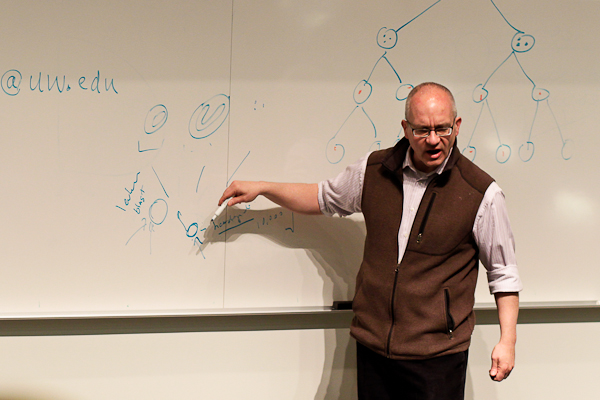
Dr. Tony Blau, Professor of Medicine, Hematology, Adjunct Professor of Genome Sciences, and Co-Director, Institute for Stem Cell & Regenerative Medicine, University of Washington School of Medicine
In each of us, we might have a trillion cells in our blood, but we have about 10,000 blood-generating stem cells. “Where are these stem cells?” Blau asked and another student answered: in the bone marrow.
The professor next defined leukemia (cancer of the blood or bone marrow) and one life-saving treatment for it, dependent on stem cells and developed “next door” at the Fred Hutchinson Cancer Research Center. Stem cell transplantation with bone-marrow-derived stem cells was led by Dr. E. Donnall Thomas, whose work was recognized in 1990 with a Nobel Prize.
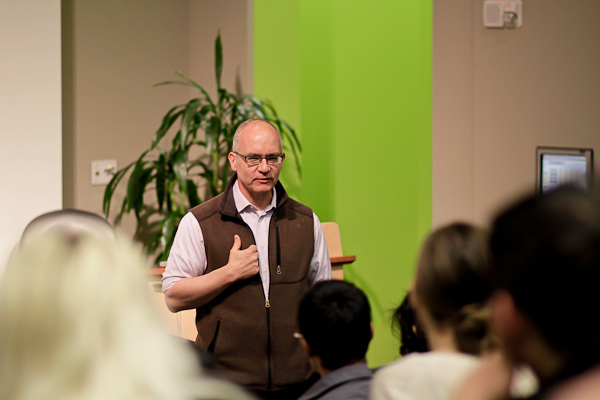
Dr. Blau explained the basics of hematopoietic stem cell transplantation, of regenerative medicine as studied at the ISCRM, and he introduced what we would see for ourselves, next — in tours of several research labs on campus at UW South Lake Union.
Tour One: Tony Blau Lab – cancer biology and stem cells
There are about 500 researchers at UW South Lake Union. Neighbors include the Seattle Cancer Care Alliance, Seattle Childrens’ Research Institute, Seattle Biomedical Research Institute, Novo Nordisk, PATH, Fred Hutchinson Cancer Research Center, et al.
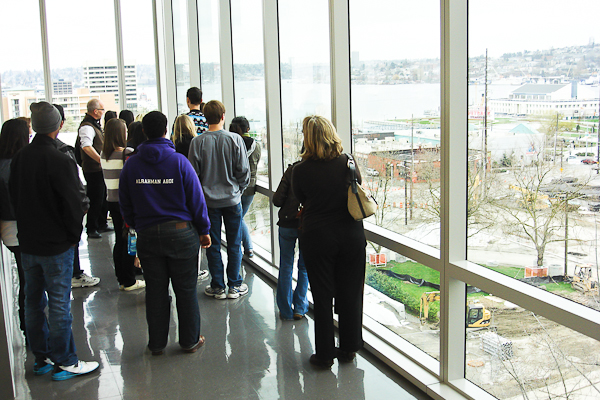
- Upstairs at his lab’s front door, Dr. Blau pointed out a few notable neighbors in biomedical research in Seattle’s South Lake Union neighborhood.
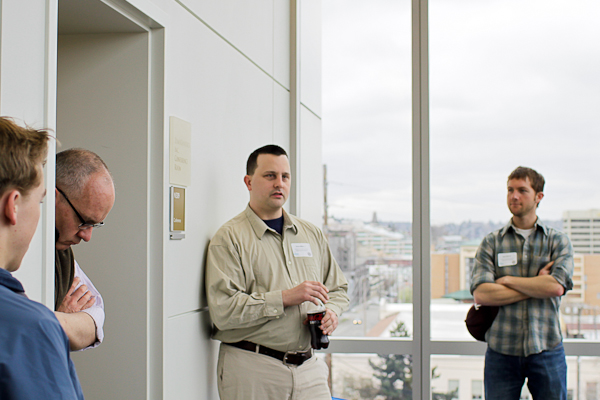
Researchers Tony Blau, Chris Miller, and Kyle Rattray of the Blau Lab
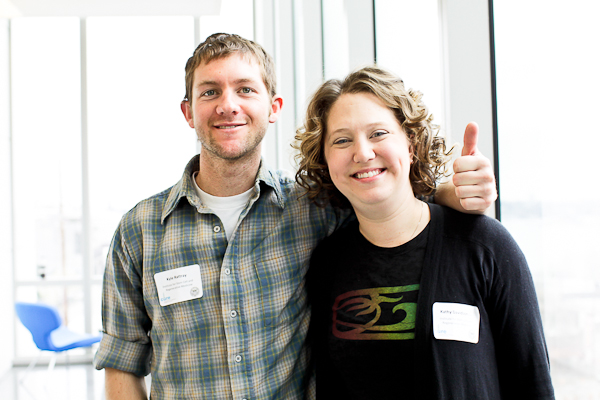
Researchers Kyle Rattray and Kathy Davidson at the Blau Lab
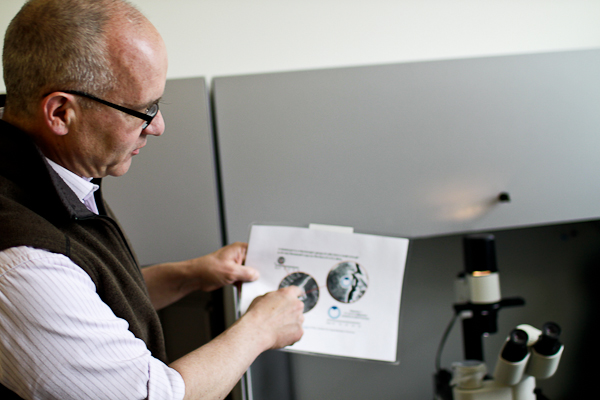
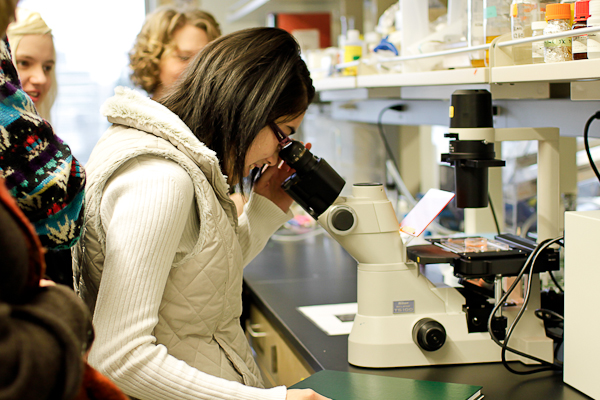
Tour Two: Mike Laflamme Lab – cardiovascular research
Professor Laflamme’s lab researches cardiac applications for human embryonic stem cells, including repair and regeneration of ventricular, atrial, and other cells from embryonic stem cells.
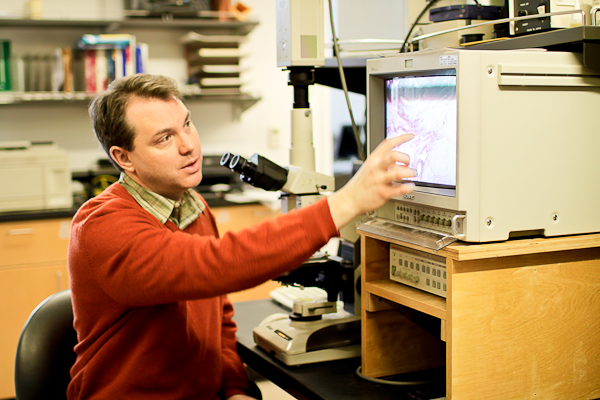
Professor Mike Laflamme, Pathology, Molecular and Cellular Biology, University of Washington
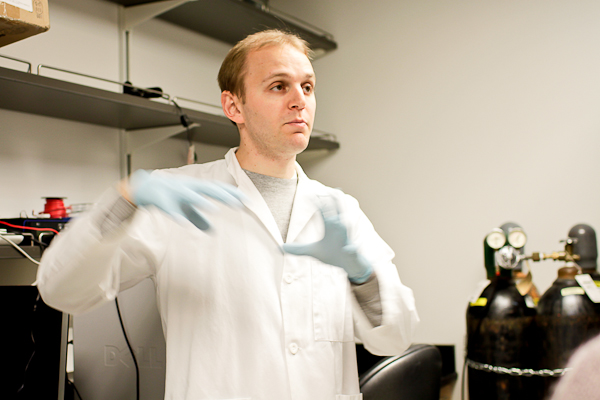
Researcher Jay Gantz, UW Bioengineering
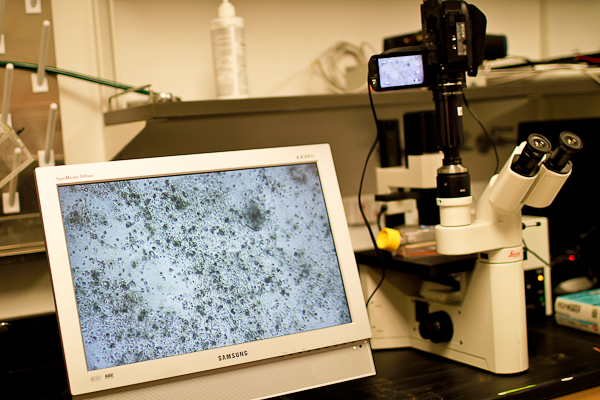
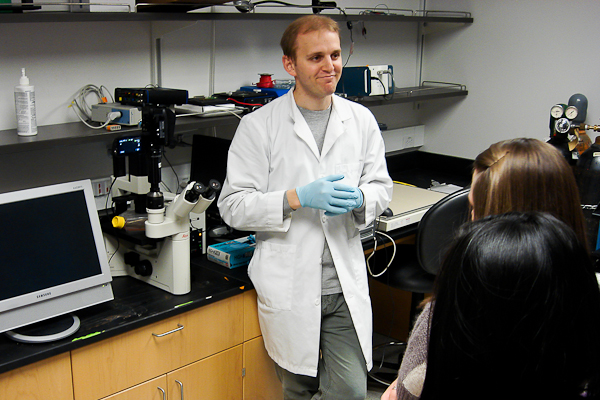
Tour Three: Tim Martins, Co-Director of the Quellos High Throughput Screening Core – screening molecules for drug development
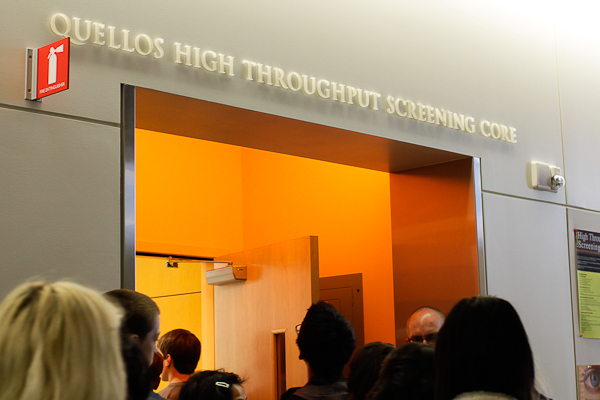
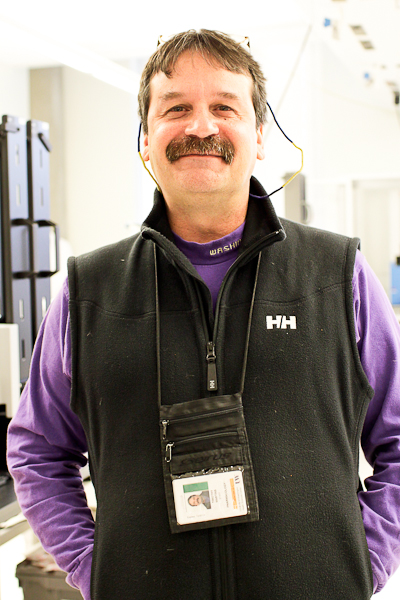
Dr. Tim Martins, Co-Director welcomes us to the Quellos High Throughput Screening Core, full of the robotics and automation which have vastly improved biomedical research with improved speeds for identifying therapeutic drug candidates.
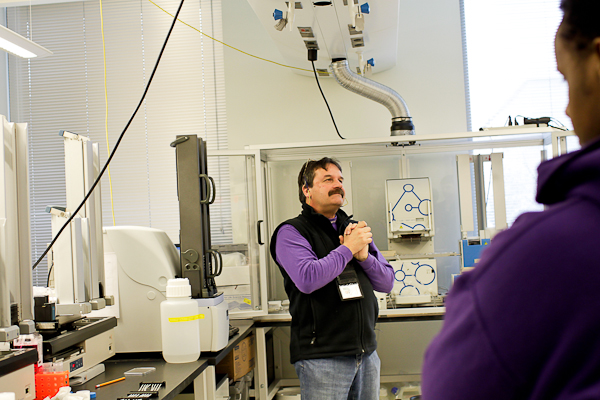
Dr. Martins was asked about making mistakes in experiments. He replied "I make mistakes, but I'm not afraid to make mistakes," while explaining failure rate in research and the importance of confidence.
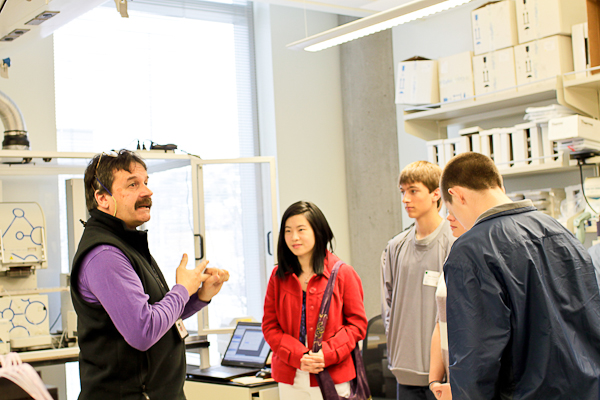
Dr. Tim Martins with ready answers on our tour
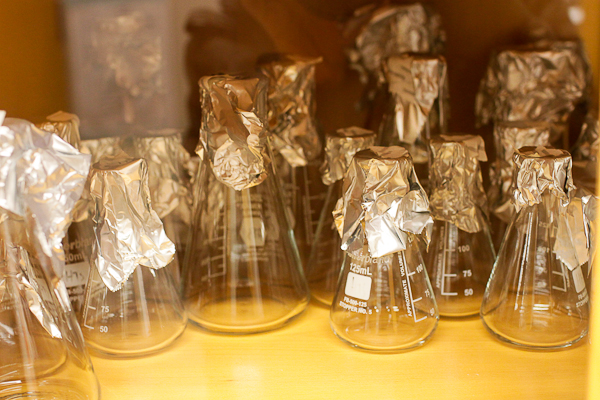
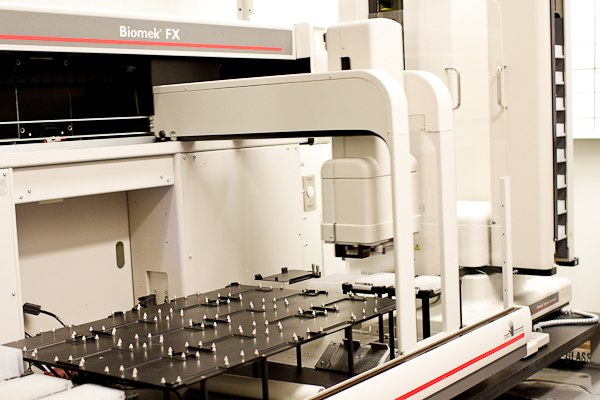
Robots! at the Quellos High Throughput Screening Core
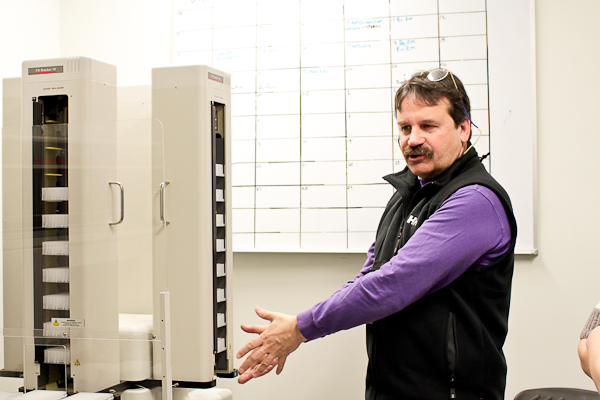
Hands-on with Planaria and Play-dough
After our tours and lunch, we enjoyed hands-on activities with planaria and Play-dough — to model human embryonic development.
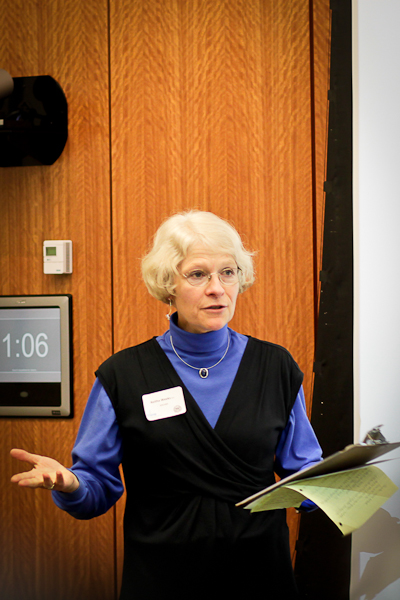
Dr. Reitha Weeks, PhD, Program Manager for Science Outreach at NWABR introduces planaria
Planaria are “the regeneration experts” explains Reitha Weeks of NWABR — if you separate one worm into 279 pieces, they grow into 279 worms! Planaria also serve as model organisms for understanding human stem cells.
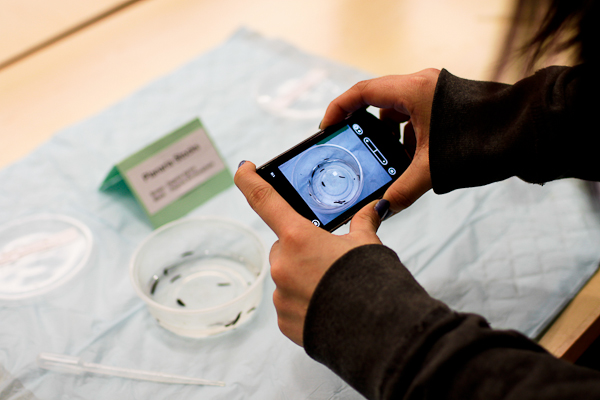
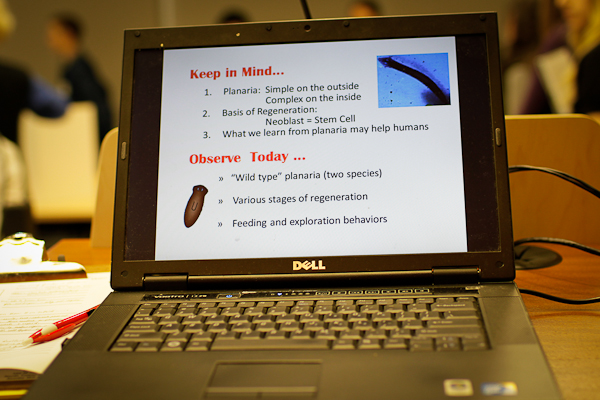
NWABR offers resources for teaching about biomedical research and ethics, including our popular Stem Cell unit with “Plenty of Planaria” to model stem cell function, development, and the complexity of tissue regeneration.
The curriculum is geared towards high school students and available for download free of charge.

Microscope, camera, and monitor loaned to us by Leica Microsystems, Inc. Thank you!


Next up, modeling early embryo development — with play-dough!
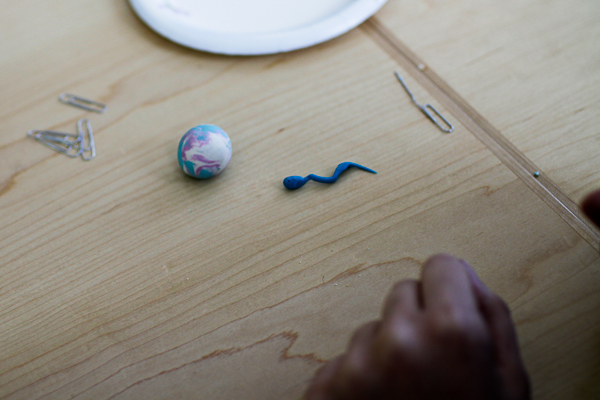
Play-dough Egg and Sperm
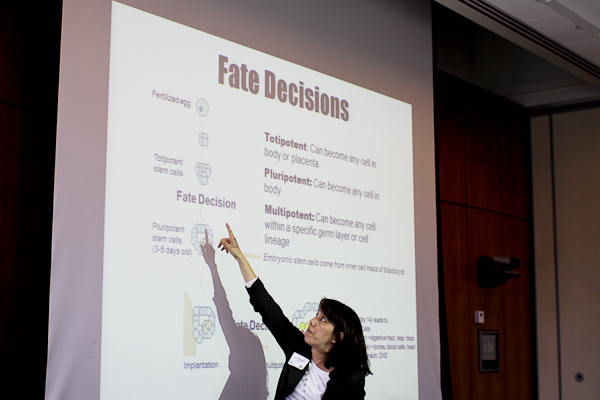
Jeanne Chowning, MS, Director of Education at NWABR leads the activity
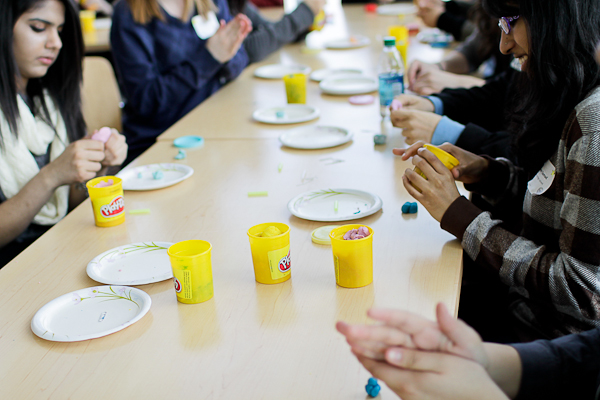
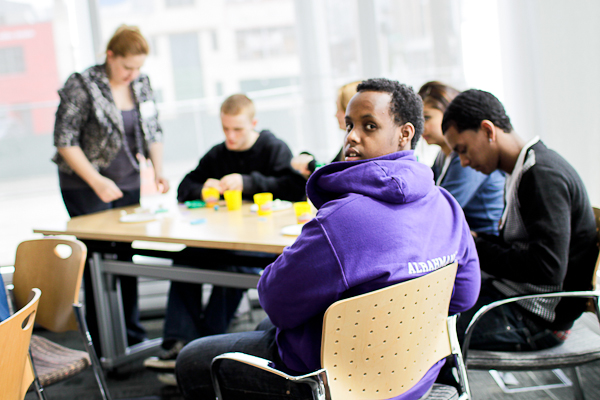
Students in Dawn Tessandore's AP Biology class
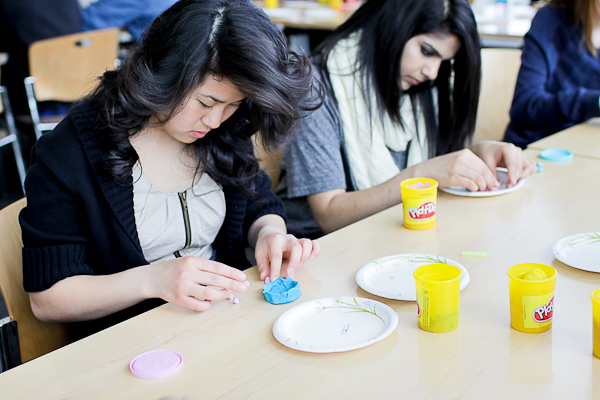
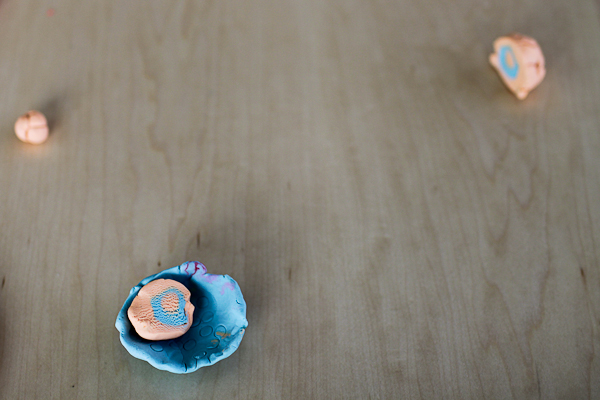
Breakout Groups: Ethical Issues in Stem Cells
After the above activities, we broke out into groups to discuss ethical issues more closely. A few of the groups were photographed, as below. Group leaders and subjects included:
- TONY BLAU, MD — Stem Cell Treatments: Considering the risks and benefits of testing stem cell treatments in humans.
- DAVID EMERY, PhD — Embryonic Stem Cells: How far should we go in seeing if they can grow into embryos?
- ERICA JONLIN, PhD — Savior Siblings: “My Sister’s Keeper” – what if you were a genetic “designer baby” created to save your sick sister?
- KATHY DAVIDSON, PhD — Embryos and Research – Creation and Donation: Should researchers be allowed to encourage couples to donate embryos?
- KYLE RATTRAY, MD/PhD Program — Social Justice: Disease Research and Stem Cells: What diseases should be prioritized in stem cell research?
- CHRIS MILLER, PhD — Knowing Your Future: What Can Your DNA Tell You? How much do we want to know about the relative risks of what potentially lies ahead for us?
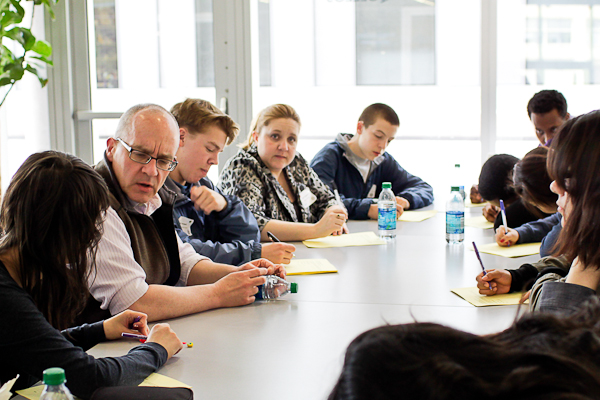
TONY BLAU, MD -- Stem Cell Treatments: Considering the risks and benefits of testing stem cell treatments in humans
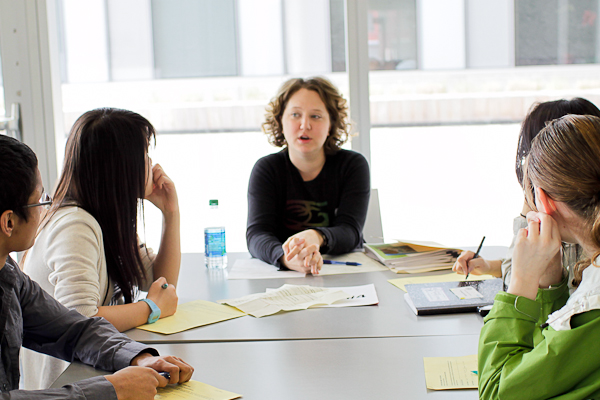
KATHY DAVIDSON, PhD -- Embryos and Research - Creation and Donation: Should researchers be allowed to encourage couples to donate embryos?
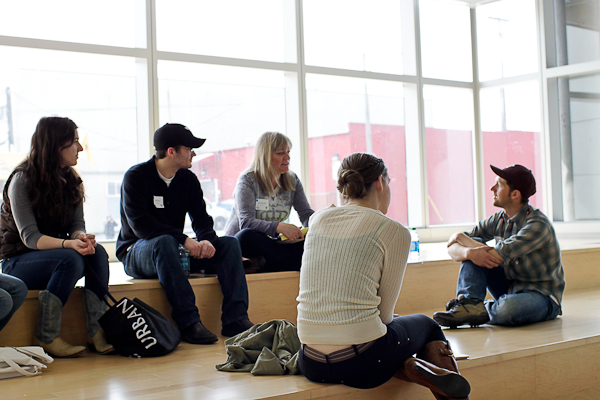
KYLE RATTRAY, MD/PhD Program -- Social Justice: Disease Research and Stem Cells: What diseases should be prioritized in stem cell research?
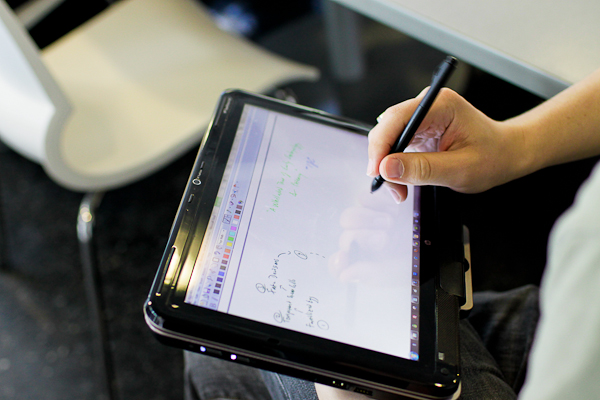
Youth Ethics Summit 2011 was blogged by Brian Glanz for NWABR
Please reuse and remix! We share with a Creative Commons Attribution License.
Photography by Mohini Patel Glanz.
Youth Ethics Summit 2011 was presented by:

and

This program was supported by a Collaborations to Understand Research and Ethics (CURE), 1R25RR0251131, a Science Education Partnership Award from the National Center for Research Resources. The content is solely the responsibility of the authors and does not necessarily represent the official views of the National Center for Research Resources or the National Institutes of Health.






































































